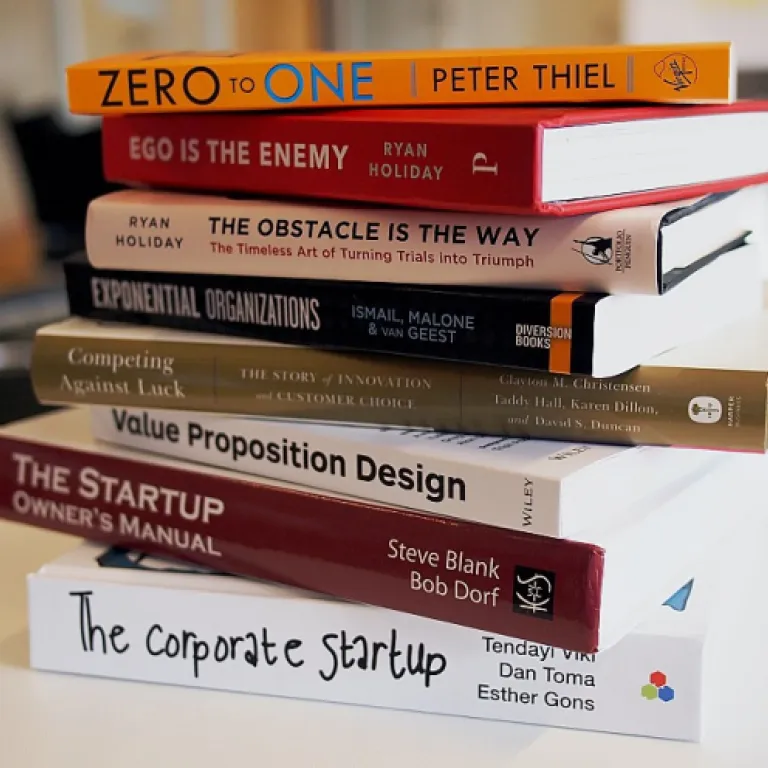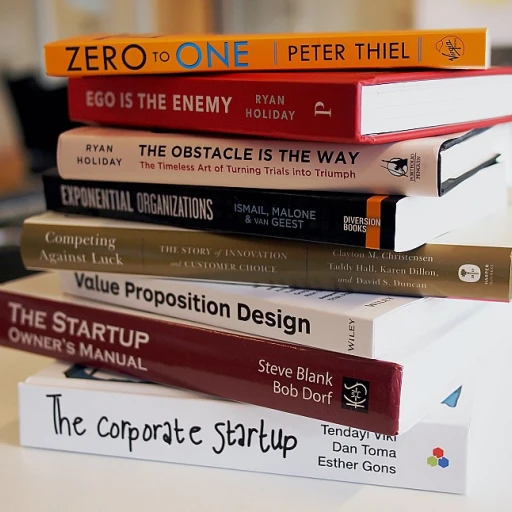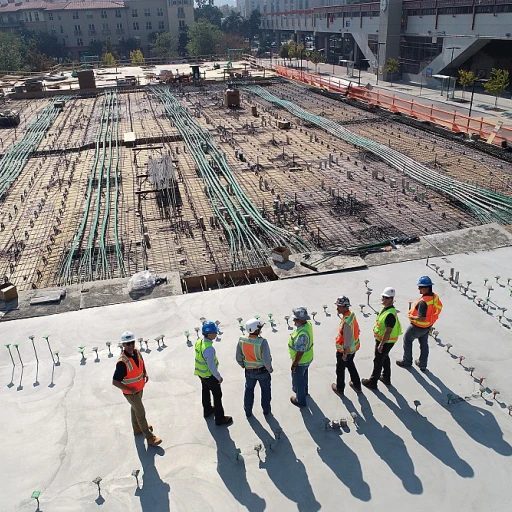
Understanding the Tech Hiring Landscape
Insights into Tech Hiring Challenges
Navigating the tech hiring landscape can be quite intricate, with various factors impacting the overall process. The demand for skilled professionals has significantly increased, yet the supply is not keeping up. This scenario intensifies the competition among employers, making it essential to streamline the hiring process to secure top talent. Incorporating an effective interview guide can be a game-changer. By having a clear vision of what the role entails and the qualities desired in a candidate, organizations can align their processes to attract the right fit. Ensuring a smooth interview scheduling process is pivotal. Using scheduling tools can support both parties involved by minimizing back-and-forth communication. It helps to efficiently manage multiple interviews and keep track of interviewer availability. Streamlining scheduling doesn't just save time; it also enhances the overall candidate experience, leaving a positive impression. Furthermore, a structured interview process will help in delivering timely and constructive feedback, which can build trust and confidence in potential candidates. As you delve into the nuances of tech hiring, consider how strategic scheduling and well-prepared interview details contribute to the success and efficiency of the entire process.Pros of Back-to-Back Interviews
Advantages of Conducting Consecutive Interviews
To optimize the hiring process and ensure a seamless interview experience, many companies consider implementing back-to-back interviews. This approach offers several benefits that can make the interview process more efficient and effective for everyone involved. Firstly, it significantly helps save time for both the interviewers and candidates. Scheduling all relevant rounds consecutively on the interview day reduces the need for candidates to return multiple times or block off additional days in their calendars, which enhances the overall candidate experience. It also streamlines the scheduling process, ensuring that interviewers don’t need to continuously adjust their calendars. Moreover, back-to-back interviews support the hiring team in keeping track of candidate impressions and feedback. By having multiple interviews scheduled back, interviewers can efficiently compare notes while the details are still fresh in their minds. This approach ultimately helps in maintaining the consistency of the feedback and ensures a smoother decision-making process. Another key advantage is the increased efficiency in communication among the parties involved. With a condensed interview schedule, hiring managers can quickly discuss impressions and compile the necessary documentation, making it easier to form a comprehensive view of the candidate’s fit for the role. Finally, the reduction in buffer time between interviews can lead to faster decision-making, which is crucial in competitive tech hiring landscapes where top talent quickly receives offers. This rapid interview process reflects well on the company, leaving a positive impression on candidates that can differentiate your organization in a crowded market. To deepen your understanding of the interview scheduling landscape, you might find it useful to explore essential questions to ask in tech interviews. This resource can support you in refining your approach and getting the best outcomes from each interview session.Cons of Back-to-Back Interviews
Considering the Drawbacks of Back-to-Back Interviews
While back-to-back interviews can streamline the hiring process, they also come with notable drawbacks that both candidates and interviewers should consider. One key issue is the potential for exhaustion. Conducting interviews one after the other can be mentally and physically tiring for the interviewing team, possibly affecting their ability to provide comprehensive feedback.
Another concern is the risk of diminished candidate experience. When interviews are tightly scheduled, candidates might feel rushed or pressure, which could impact their performance and leave them with a negative impression of the company's hiring process. Moreover, the lack of buffer time between interviews might not allow candidates adequate opportunity to prepare for each new conversation, which can undermine the fairness of the evaluation process.
Communication issues can also arise. When scheduling multiple interviews, there's an increased likelihood of logistical snags, such as double bookings or time zone misalignments, which can frustrate candidates and interviewers alike. Advanced scheduling tools and clear communication channels will help mitigate these issues, but it requires careful planning and execution.
Additionally, back-to-back interviews can complicate the interviewer's ability to keep track of each candidate's performance accurately. Without adequate breaks to consolidate notes and reflections, the process might lead to oversight or biased evaluations. Providing enough buffer time between sessions is crucial to ensure a thorough and fair assessment.
Balancing Efficiency and Fairness
Ensuring Fairness and Optimizing Efficiency in Interview Scheduling
Balancing the need for efficiency with fairness during back-to-back interviews is paramount in the hiring process. The interview scheduling approach significantly affects both the candidate experience and the overall success of the hiring process. While back interviews can streamline the process, interviewers must consider several factors to maintain fairness. To ensure fairness, buffer time should be included between interviews. Buffer periods help interviewers regroup, analyze feedback, and prepare for the next candidate. It also allows candidates to collect their thoughts, contributing to a more positive impression of the company. Good communication between all parties involved is crucial. Clear instructions about interview details and the overall scheduling process will help candidates feel informed and confident. This communication includes confirming interview times and any logistical details well in advance. Moreover, using effective scheduling tools can support in keeping track of time and ensuring all interviews are conducted smoothly. These tools not only optimize the scheduling process but also help in keeping both candidates and interviewers on the same page. In conclusion, while back-to-back interviews offer efficiency, they necessitate thoughtful scheduling to balance fairness and maintain a productive interview day. It's crucial to schedule best practices such as buffer periods and effective communication to ensure a seamless experience for all involved in the interview process.Tips for Effective Interview Scheduling
Strategies for Efficient and Fair Interview Scheduling
Scheduling back-to-back interviews efficiently while still ensuring a fair and positive candidate experience can be challenging. There are several strategies to accomplish this, and adopting a well-structured approach can significantly benefit the hiring process. First, always provide buffer time between interviews. This isn’t just a courtesy for candidates, but also necessary for interviewers to regroup, catch a breath, or discuss initial impressions. This buffer also allows for any unplanned overruns in the schedule which can occur often. Considering the use of scheduling tools can greatly enhance the scheduling process. These tools help manage multiple interviews by keeping track of appointment times and sending reminders to all parties involved. Not only do they save time, but they also help support effective communication between candidates and interviewers. Another key aspect to consider is the clear communication of interview details. Providing candidates with a clear agenda, including the names of interviewers they will meet, the format of each interview, and any other necessary information, will help reduce anxiety and prepare them for the interview day. Feedback is crucial. Both during the hiring process and after, gathering feedback from interviewers and candidates can help identify areas of improvement. A streamlined feedback process can help ensure issues are addressed promptly, leading to better experiences in future interviews. Lastly, balancing the needs of the hiring process with candidate experience is an art. While efficiency is important, the ultimate goal is a positive impression for all involved. As such, the best outcomes typically arise from a fair and well-considered approach to scheduling back interviews. Good luck with your hiring endeavors! With these strategies in place, your interview process will not only be more effective but will leave a lasting positive impression on all candidates.Case Studies and Expert Opinions
Real-World Insights from Tech Hiring
In the dynamic world of tech hiring, scheduling back-to-back interviews can be a double-edged sword. To shed light on this, let's delve into some real-world insights and expert opinions.
Case Study: A Leading Tech Firm's Approach
A prominent tech company recently revamped its interview scheduling process. They initially adopted back-to-back interviews to streamline the hiring process. However, they soon realized that while this approach increased efficiency, it sometimes compromised the candidate experience. Candidates reported feeling rushed, and interviewers found it challenging to provide detailed feedback immediately after each session.
To address these issues, the company introduced buffer time between interviews. This adjustment allowed both candidates and interviewers to regroup and reflect, ultimately leading to more thoughtful interactions and better hiring decisions.
Expert Opinion: Balancing Efficiency with Candidate Experience
Industry experts emphasize the importance of balancing efficiency with fairness in the interview process. While back-to-back interviews can expedite hiring, they caution against neglecting the candidate's perspective. A positive impression during the interview day is crucial, and scheduling tools can support this by ensuring all parties involved have clear communication and adequate preparation time.
Experts also suggest that conducting interviews with a focus on quality over quantity will help maintain a high standard in the hiring process. This means considering the candidate's comfort and the interviewer's ability to keep track of interview details effectively.
Lessons Learned
- Buffer time between interviews can significantly enhance the candidate experience.
- Effective communication and scheduling tools are essential for a smooth interview process.
- Balancing efficiency with fairness will help create a positive impression on candidates.
In conclusion, while back-to-back interviews can be beneficial, it's crucial to consider the broader implications on the hiring process. By learning from real-world cases and expert advice, companies can schedule best practices that support both efficiency and a positive candidate experience. Good luck with your hiring endeavors!









